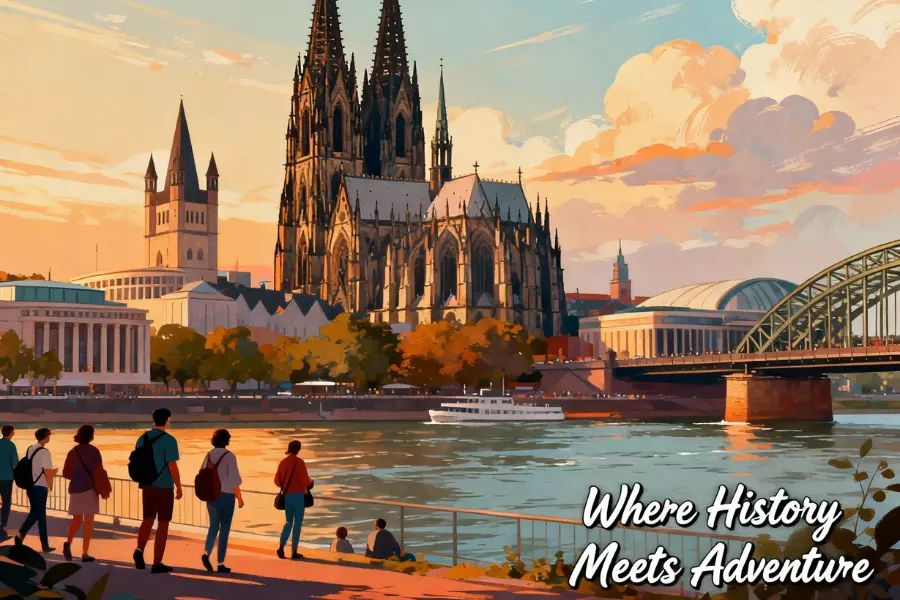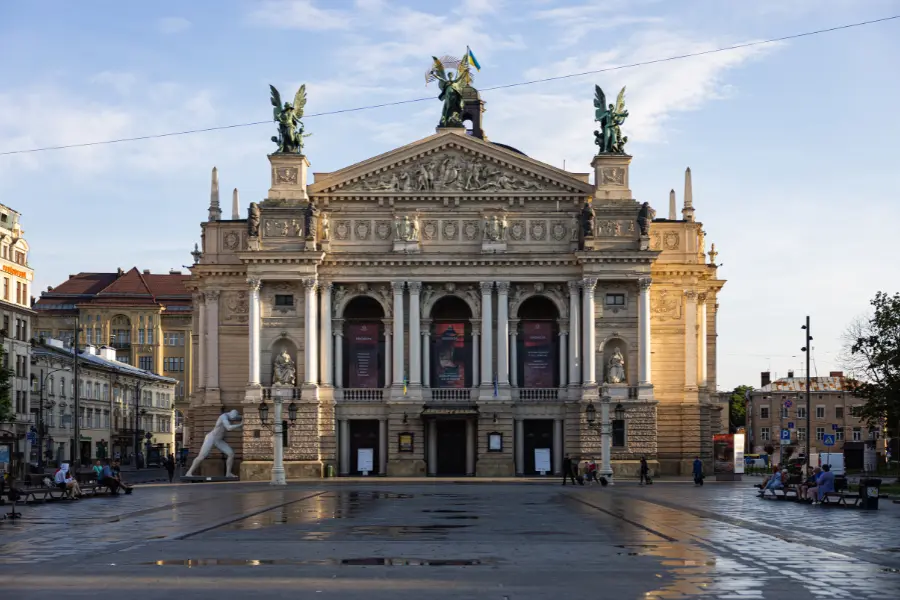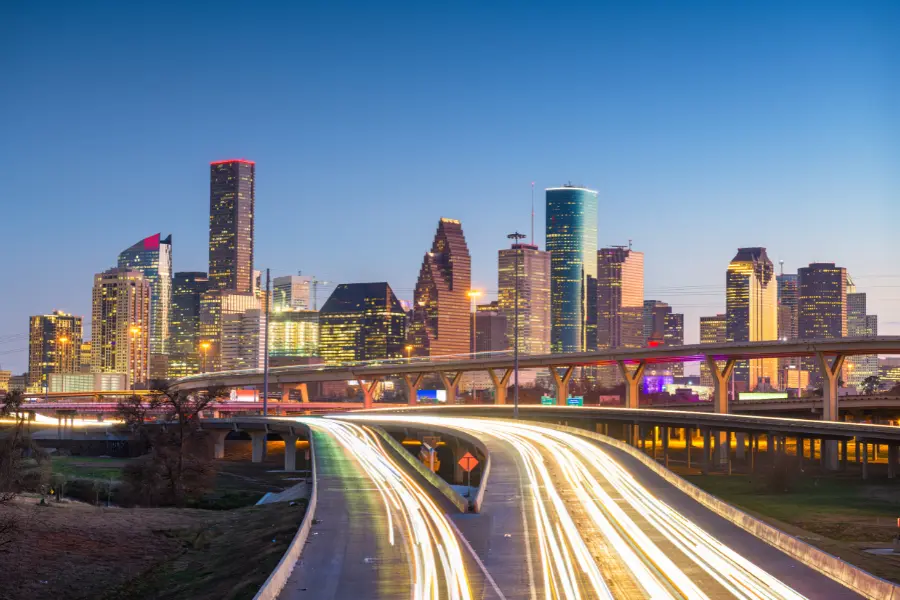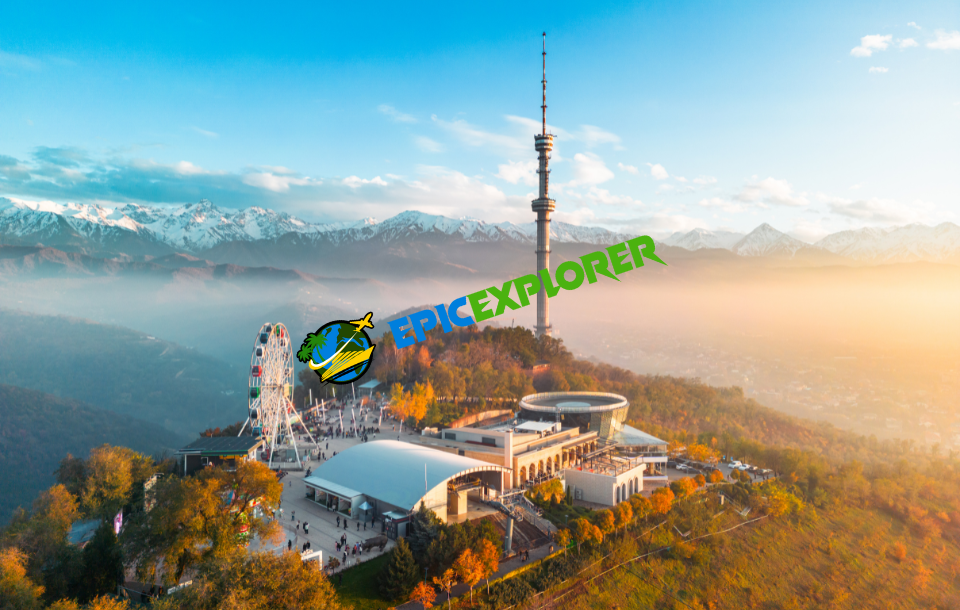Ultimate Cologne Travel Guide 2025: Explore Cologne’s Cathedrals, Museums & Culture
Cologne — Germany’s vibrant city along the Rhine River — beautifully fuses history, art, and modern charm. Known for its iconic Cologne Cathedral, rich museum scene, and lively local culture, this city is a must-visit destination in 2025. Whether you’re an art enthusiast, foodie, or history lover, this Cologne travel guide will help you explore the best cathedrals, museums, landmarks, and hidden gems the city has to offer.
Cologne Cathedral (Kölner Dom): The Soul of the City
No trip to Cologne is complete without visiting the Cologne Cathedral (Kölner Dom) — a UNESCO World Heritage Site and one of the most stunning examples of Gothic architecture in Europe. The twin spires, intricate stained-glass windows, and majestic interior make it one of Germany’s most photographed landmarks.
Climb the 533 steps of the South Tower to enjoy breathtaking panoramic views of the Rhine River and Cologne’s skyline. Inside, don’t miss the Shrine of the Three Kings, said to hold the relics of the biblical Magi, attracting millions of pilgrims every year.
Travel Tip: Visit around sunset when the cathedral glows in golden light or at night when it’s beautifully illuminated against the dark sky — perfect for photographers.
Best Museums in Cologne: Where Art Meets History
Cologne is a treasure trove for art lovers and history buffs alike. Its world-class museums capture centuries of creativity, culture, and craftsmanship.
Römisch-Germanisches Museum
Just steps away from the cathedral, this museum brings ancient Cologne’s Roman heritage to life. You’ll find mosaics, sculptures, jewelry, and artifacts from the city’s Roman past. The Dionysus Mosaic, an exquisite Roman floor masterpiece, is a must-see.
Insider Tip: The museum is temporarily relocating due to renovation, so check ahead for its latest exhibition site before visiting.
Museum Ludwig
If you’re a fan of modern and pop art, Museum Ludwig is a must-visit. It showcases works by Picasso, Warhol, Lichtenstein, and other modern masters. The museum also features Germany’s largest collection of Pop Art — a colorful, thought-provoking journey through 20th-century creativity.
Don’t Miss: The rooftop terrace offers striking views of the Rhine and the Cathedral — a perfect photo spot.
Wallraf-Richartz-Museum & Fondation Corboud
Take a walk through European art history at this fine arts museum. You’ll find masterpieces from the Renaissance, Baroque, and Impressionist eras, including works by Monet, Rubens, and Rembrandt.
Pro Tip: Audio guides in English are available, helping visitors appreciate the rich context behind each masterpiece.
Schokoladenmuseum (Chocolate Museum)
Cologne’s Chocolate Museum is a delicious stop for all ages. Learn about the history of chocolate, from ancient Mayan cacao traditions to modern production. Watch live chocolate-making demonstrations and sample freshly made treats.
Located along the Rheinau peninsula, it’s also a scenic spot for a riverside stroll after your visit.
Read also: Explore Providence City: The Ultimate Rhode Island Travel Guide
Architectural Wonders and Historic Attractions in Cologne
Hohenzollern Bridge
A symbol of love and unity, the Hohenzollern Bridge is famous for its thousands of colorful “love locks” placed by couples. Walk across the bridge to enjoy spectacular views of the cathedral and the Rhine River — especially magical at night.
NS-Dokumentationszentrum (Nazi Documentation Center)
Housed in a former Gestapo prison, this museum offers a powerful look into Cologne’s experience during World War II. It’s a deeply moving visit that tells the city’s story of resilience and remembrance.
MiQua Archaeological Zone
Step back into ancient times at the MiQua Archaeological Zone, where Roman ruins meet modern architecture. Excavations reveal the city’s Roman foundations, ancient streets, and remnants of Jewish history, creating a fascinating glimpse into Cologne’s layered past.
Cologne’s Old Town & Food Scene: A Feast for the Senses
Cologne’s Altstadt (Old Town)
Stroll through Altstadt, the heart of old Cologne, where colorful buildings line cobblestone streets. The area is packed with cozy restaurants, local breweries, and boutique shops.
Try Kölsch, Cologne’s signature light beer, served in small glasses for freshness. Pair it with local dishes like Himmel und Ääd (mashed potatoes, apple sauce, and black pudding) or Rheinischer Sauerbraten, a sweet-sour beef stew.
Local Tip: Visit a traditional Brauhaus (beer hall) for the full authentic experience — the waiters, called Köbes, will keep serving you Kölsch until you cover your glass with a coaster!
Festivals, Culture & Nightlife in Cologne
Cologne is known for its lively spirit and inclusive culture, best experienced through its world-famous events.
Cologne Carnival
Every February, the city transforms into a giant street party for the Cologne Carnival, known as the “fifth season.” Expect parades, costumes, music, and nonstop fun — one of Europe’s biggest and most joyful festivals.
Cologne Christmas Markets
If you visit in winter, the Cologne Christmas Markets are magical. The main market near the cathedral features twinkling lights, handcrafted gifts, and the irresistible aroma of mulled wine and roasted nuts.
Nightlife in Cologne
For evening entertainment, head to Belgian Quarter (Belgisches Viertel) — a trendy neighborhood filled with bars, live music venues, and creative eateries. If you prefer a relaxed vibe, enjoy a riverside drink at one of the cozy pubs along the Rhine promenade.
Practical Tips for Visiting Cologne
-
Best Time to Visit: Late spring (May–June) and early autumn (September–October) offer pleasant weather and fewer crowds.
-
Getting Around: Cologne’s public transport network — trams, buses, and trains — is efficient and easy to navigate. Consider buying a KölnCard for unlimited rides and discounts on attractions.
-
Accommodation: Stay near the Cathedral for convenience or explore boutique hotels in the Belgian Quarter for a more local vibe.
-
Language: German is the main language, but English is widely spoken in tourist areas.
-
Local Etiquette: Be respectful in churches and museums, and remember that tipping 5–10% is customary in restaurants.










